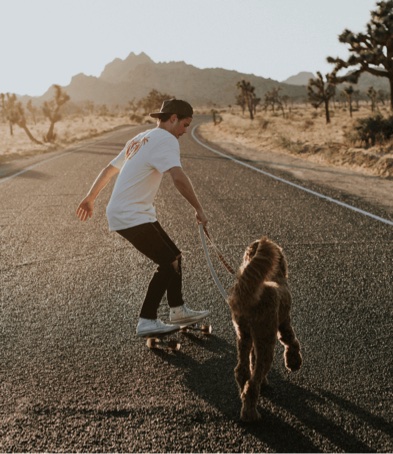11 Must-Try Waterfall Hikes in Los Angeles
All waterfall hikes in L.A. have one thing in common—unbeatable views of terrific cascades. Here are the ones to try next.

Whether tucked away in the rugged wilderness or found in the Gold Rush era towns, the gold mines are truly a sight to see.
Shouting up on the hilltop, James Marshall shouted with all his might, “Eureka, eureka”! Well, that’s probably not what actually happened when James Marshall first saw glimmering gold nuggets in the tailrace at Sutter’s Mill. However, shortly after his life-changing discovery, gold miners immigrated to the Golden State in large numbers, seeking success of their own.
While we’ve come a long way since the 1840s, expert miners still scout for gold in California—albeit without such a rush. Whether tucked away in the rugged wilderness or found in the Gold Rush era towns, the mines are truly a sight to see.

The South Yuba River dates its first golden discovery back to 1848. Since then, expert gold miners and motivated beginners have been scouting the area in search of a lucky find.
Pan for gold in the river and see if you’ll find gold nuggets rather than just smooth granite rocks. Take part in these gold panning demonstrations every Saturday and Sunday. Brush up on your knowledge of historical facts and listen to fascinating stories about finding gold.

Does your business rank among the best in California?
nominate a businessLearn more about our selection criteria and vetting process.
Knowledgeable docents will provide you with a step-by-step guide to successful panning techniques. You’ll also learn about alternatives such as hard rock and hydraulic mining. If you’re out of luck, don’t worry—the South Yuba River is renowned for pristine swimming holes and flourishing wilderness.

Home to an abundance of discoveries, the Kern River is California’s prime public gold-mining location. Since 1851, the river has been panned by experts and enthusiasts in search of the shiniest gold nuggets in California.
If you’re new to the river, your best bet is to start at the Keyesville Recreational Mining Area. The area is free to public exploration and is an ideal trip for the family. Located along Kern River is Greenhorn Creek—home to the first successful gold find during California’s Gold Rush era.

Located 35 miles northwest of D.T.L.A., Santa Clarita is said to be the spark igniting the California Gold Rush flames—even before the Sutter Mill discoveries. The rolling hillsides invite you to explore the dry creek beds in all their glory.
Although the area isn’t as gold rich as it used to be, extraordinary finds are still recorded every now and again. In 1993, Kent Gates stumbled upon an incredible 12.8 ounce 23-karat gold nugget located in public land. Try your luck at searching for gold in Santa Clarita—you never know what you’re going to find.
The San Gabriel River, a well-known public gold mining spot in Southern California, boasts an abundant array of minerals. Winding through the surrounding mountains and valleys, the river has been the site of numerous discoveries. From 1855 to 1902, it's estimated that the San Gabriel River's gold finds amounted to roughly $125 million, highlighting its significant contribution to the region's mineral wealth.
East Fork is perhaps the most popular area when it comes to panning—it’s the richest section of the river. If you’re a keen adventurer, don’t draw the line at this area’s confines. Instead, set out to explore the nearby creeks and gulches which have plenty of hidden nuggets.

Several of the largest mines in San Diego County are found in Julian. A little over 200,000 ounces of gold was discovered in here—all recovered from placer operations.
Upon reaching Julian’s Main Street, drive a mere three minutes down a dirt road to reach Eagle Mine and begin your tour. The mine is filled with antique mining equipment scattered among old buildings. Consisting of several levels, the mine unfolds through a series of winding tunnels. The best part of the tour? It concludes with a gold panning demonstration.

While many mining hotspots became ghost towns after the Gold Rush era, Plumas County still showcases its sights. The area draws in thousands of visitors in search of gold flakes and Californian history.
If you seriously want to pan for gold, it’s best you pack your own panning gear. The staked land might be difficult to mine on your own and there’s not too much out here.

Transport yourself back in time to Gold Country’s Jamestown, which is one of the most frequented gold mines in California. Although shiny gold nuggets may reel you in, this historic town is also home to eateries and recreational activities.
Photography enthusiasts, Jamestown’s picturesque scenery will have you snapping away endlessly. Over two hundred films were filmed in Jamestown, including Clint Eastwood’s Unforgiven and Back to the Future Part III.
Contemplating gold prospecting in California? Bring basic tools and your adventurous spirit to Jamestown—gold panning awaits you. There are stores around town selling gold pans and demonstrating common panning techniques, just in case if you need a few pro tips.

In search of gold? Head to Columbia State Historic Park, located east of the Sierra Nevada Mountains. You’ll discover large remnant Gold Rush-era structures at the once known “Gem of the Southern Mines.”
The park is your go-to California gold panning destination. Brush up on Gold Rush history as you stroll the scenic pathways once home to 19th-century miners. Take it even a step further and enjoy an immersive park tour led by park descents dressed in period clothing (held on the second Saturday of each month). If you’re interested in touring a mine, several mines are open for visitors, and are accompanied by lessons on panning techniques.

Despite the many excavations carried out in the Sierra Nevada foothills, there’s still plenty of gold tucked away in the crevices of Coloma. Even after the California Gold Rush, American River gold panning has proved fruitful to many.
Panning for gold isn’t done by wading in the river with a gold pan anymore. The modern-day technological panning advancements have paved the way for more sophisticated techniques.
Coloma quickly adapted to the approach and now uses advanced methods. However, Coloma has strict requirements for panning. To preserve the refined mining conditions, you can only explore private properties (as permissible by the owner). Coloma’s private campgrounds only allow panning to registered guests.
However, if you head to Marshall Gold Discovery State Historic Park, explorations are allowed on the northeast shore. You just won’t be able to use advanced techniques when panning for gold.


All waterfall hikes in L.A. have one thing in common—unbeatable views of terrific cascades. Here are the ones to try next.

Discover how to track and prepare for meteor showers in California for a spectacular celestial viewing experience.

Ditch the busy Spring Break crowds and check out these fantastic, underrated spring travel destinations in California.

Gaze into California's amazing sunsets with our exploration of the top sunrise spots in California.

